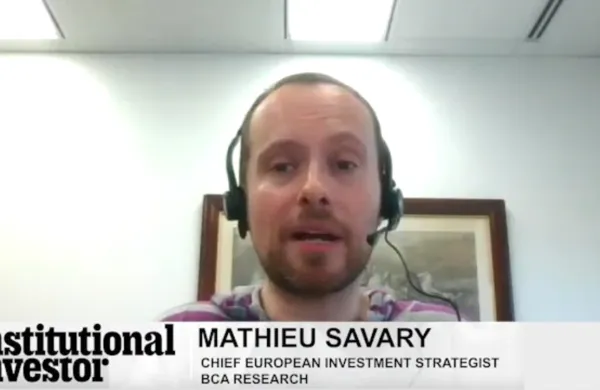It was a sign of just how bad Spain’s news had been in recent weeks, when the yield on Spanish ten-year bonds eased down on Monday on official news that Spain had returned to recession.
The cause for celebration was that Spain’s economy shrank by less than expected — declining by 0.3 percent in the first three months of this year according to a provisional estimate from the National Statistics Office. This was, thankfully, no worse (though no better, either) than the fall in the final three months of last year.
However, Monday’s confirmation that Spain is in recession has focused institutional investors’ minds on a key question: How much further are the country’s assets, buffeted by a breakneck succession of bad news, likely to slide?
The yield on ten-year Spanish government bonds closed at 5.80 percent on Monday — down 9 basis points (bp) from Friday, but 82bp above March’s opening level.
Despite the rise, some analysts think this a low interest rate to pay for the debt of a country that was on Thursday downgraded two notches by Standard & Poor’s to BBB+ — not far off junk bond status. Spain’s high and growing unemployment — a quarter of the workforce — also raises questions about its capacity to shrink its deficit, which was 8.5 percent of gross domestic product in 2011. Unemployment doubly widens the fiscal gap by depressing tax revenue and increasing government spending.
Investors may, therefore, start demanding a higher premium for holding Spanish debt — which is a relatively modest 1.67 percentage points higher than in January 2009, when S&P withdrew Spain’s AAA status.
If Spain’s sovereign debt yields rise further, bringing down the price of other Spanish assets, the 7 percent level may provide a back stop: This is the point at which analysts believe the European Central Bank is likely to intervene with aggressive buying through its Securities Market Program (SMP).
Yet many analysts think this may only provide a temporary respite for Spanish bonds. Despite heavy SMP buying in late 2011, yields for euro zone sovereigns only fell decisively in January, in the weeks after the ECB’s first three-year long-term refinancing operation (LTRO). ECB president Mario Draghi has signaled strongly that he is prepared to consider such measures again.
There is, however, a chance that even another LTRO, to follow the December and February operations, may not work. The LTROs saved Spanish debt from slumping in value because Spanish banks used much of the money they borrowed through the operations to buy government bonds. But two big Spanish banks, Santander and BBVA, have said they cannot buy further Spanish sovereign debt because it will push them over their risk concentration limits. Other Spanish banks — all the more nervous about their balance sheets following S&P’s sweeping downgrade of 11 of them on Monday — cannot be far behind.
For those institutional investors who fear there is no limit to how far Spanish debt will fall, Bunds remain a useful antidote. Even though German ten-year bonds are at historically low levels — closing on Monday at 1.67 percent — Nomura still sees them as attractive if there is only a slight rise in yield. In a note on the consequences of the Spanish sovereign downgrade, Guy Mandy, fixed income strategist in London, recommends responding to the continuing euro zone crisis by buying 10-year German bonds when yields are 1.75 percent or above.
Nomura’s interest in Bunds is based on a potentially apocalyptic outlook for the euro zone. Mandy believes that “absent a proportional policy response” from euro zone leaders to problems in Spain and elsewhere, “euro breakup remains more probable than possible.”
It is also possible, though, to put a sunnier sheen on the events of the past six months. The ECB’s first LTRO very effectively pushed down bond yields — and the ECB is probably prepared to make use, again, of a measure that has worked in the past. Moreover, every euro zone country troubled by debt fears in late 2011 has managed to respond by pushing through tax cuts and economic reforms, often to labor markets, that no electorate would have countenanced even a few years ago. For the moment these reforms, which should boost growth in the longer term, stand. Most importantly, whenever the currency union has looked on the verge of breaking up, policymakers have responded with enough to keep it going — even if they have not done enough to keep it growing, in the eyes of the increasing number of critics calling for a tempering of fiscal austerity.
If investors are optimistic about the euro zone, Spain may be the place for them to look. Its Ibex 35 equities index has recently traded at its lowest point since March 2009, in reaction to the recent slew of adverse news. The Ibex is now at a historically low price:earnings ratio of about 9.5 — compared with 17.5 for the S&P 500. The ratio was squeezed further on Monday after it fell 1.9 percent to close at 7,011.
Deutsche Bank strategists have identified the potential in a recent note — but remain wary of endorsing a Spanish strategy: “If one is looking for good news — if you truly believe that the resolve of the European leaders is higher than ever to keep the [euro] project alive, then these levels should be looked back on as very cheap entry points for Spanish company risk,” both equities and bonds. That is, however, a very big ‘if.’ “We first need some kind of growth strategy rather than extreme austerity and a more unconditionally supportive ECB,” says the note. “Only then may confidence return for Spanish corporate/equity risk.”
Investing in Spanish companies is not, in other words, for the faint-hearted.






